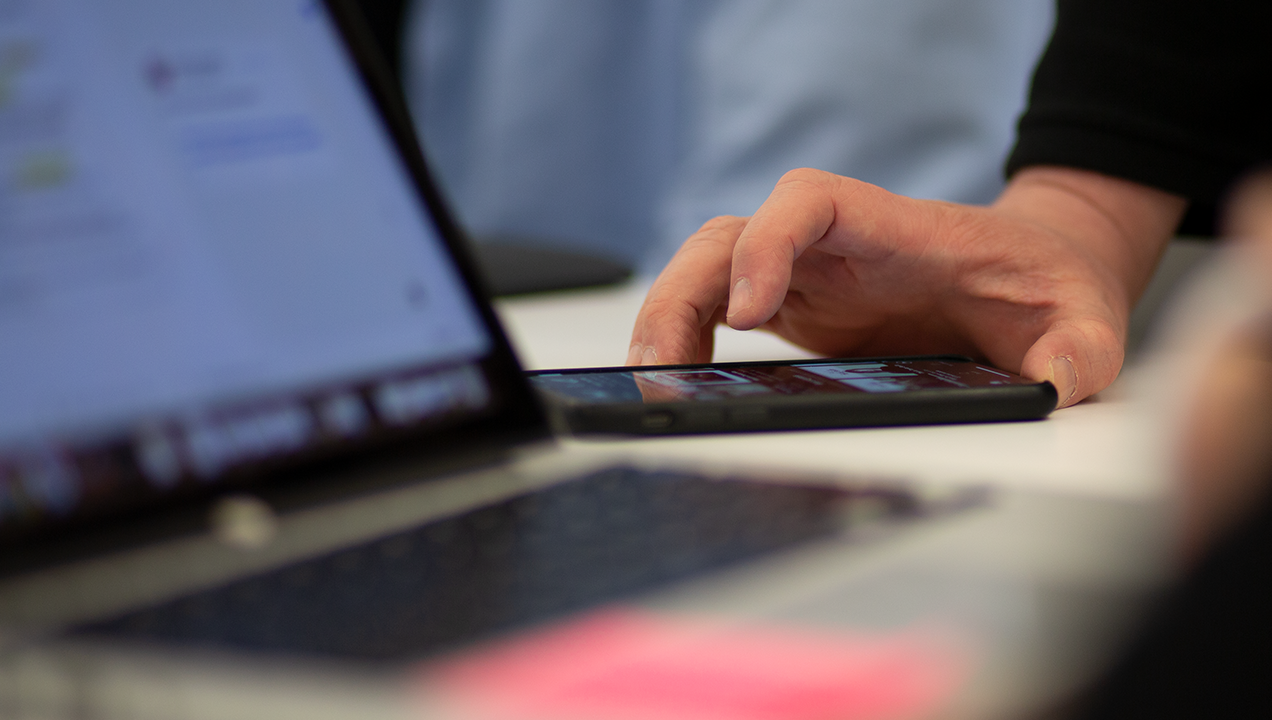Remote Testing for Mobile Devices
If you follow our blog, you’ll know we have been developing best practices for remote testing. In this latest post, we look at how to run remote sessions on mobile devices.
At the Labs we have been facilitating remote testing long before lockdown began and have been helping companies make the transition smoothly. Something that we have found from clients is a preconceived idea that testing on mobile devices is more complex or time consuming than testing on desktop. We are here to show you that this just isn’t the case!

Many researchers will be used to joining remote sessions via desktop. Smartphones can easily join collaborative meetings via tools such as Zoom and Webex, and screen share. In fact mobile phones can in some ways be a more useful tool as they can be used on the go, or by users who may not have access to a laptop or desktop – more citizens now have smartphones than any other connected device – 80% of people in the developed world now own a Smartphone. I recently ran a user session with a participant calling in from a park near his home because his housemates were too noisy! Despite his unconventional location for a user test, we were able to have a video conversation and view his screen to see how he used the app in question.
Things to consider
- There’s no ‘mouse cursor’ on mobile so you can’t see where participants are pointing or touching the screen unless they press a button.
- Some older phones don’t support screen sharing, so your recruitment will need to take account of this.
- We often ask participants to join via desktop first and then connect their phone as a second ‘participant’ on the call. This way the laptop / computer can handle the audio, act as a backup in case anything goes wrong, and can provide a better video angle for the participants face.
- Consider ways to protect participants information, especially when there are observers viewing the sessions.
more citizens now have smartphones than any other connected device – 80% of people in the developed world now own a Smartphone.
Let’s use an example of a real life study to bring this to life. Imagine we need to run remote sessions for mobile. How might we approach this?
Planning
- Decide on a conferencing platform to use
- Make sure the screener excludes those with non-compatible phones.
- Set up the meeting details and aim to make it as simple as possible. If possible avoid passwords (extra barrier for the user) and use waiting rooms instead.
- Provide clear instructions for joining your platform of choice.
- Consider instructions for both desktop and mobile.
- Ask participants to remove any personal information, websites, or apps from their phone that they do not want to be seen during the session.
Running the Sessions
- Allow 10-15 mins of the session for getting the participant connected and resolving any tech issues.
- To prevent this eating into sessions, have another team member ‘triage’ participants just before the session to get them up and running.
- Ask for participants to turn off their notifications before the session starts to help prevent disruptions and any private messages being broadcast.
- Know your tech! Be familiar with the mobile and conferencing platforms you are testing on (e.g. Android or iOS) and prepared to troubleshoot any issues.
It can also be useful to run a couple of pilot sessions with members of your team to make sure that the joining instructions are clear, and that there are no underlying tech issues that could come to light on the day of testing. In our experience the key to successful research, be it in person, or on desktop or mobile is preparation and prior planning! This allows for the research to run seamlessly, and for the researcher to be able to enjoy the sessions without a glitch.
Hopefully this has helped to show that testing on mobile devices is more straightforward than you realised, to find out more about how we have been running remote sessions get in touch with mark@sutherlandlabs.com and sign up to our newsletter to stay updated in the coming months.
